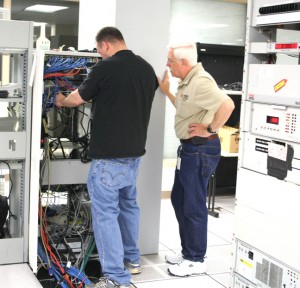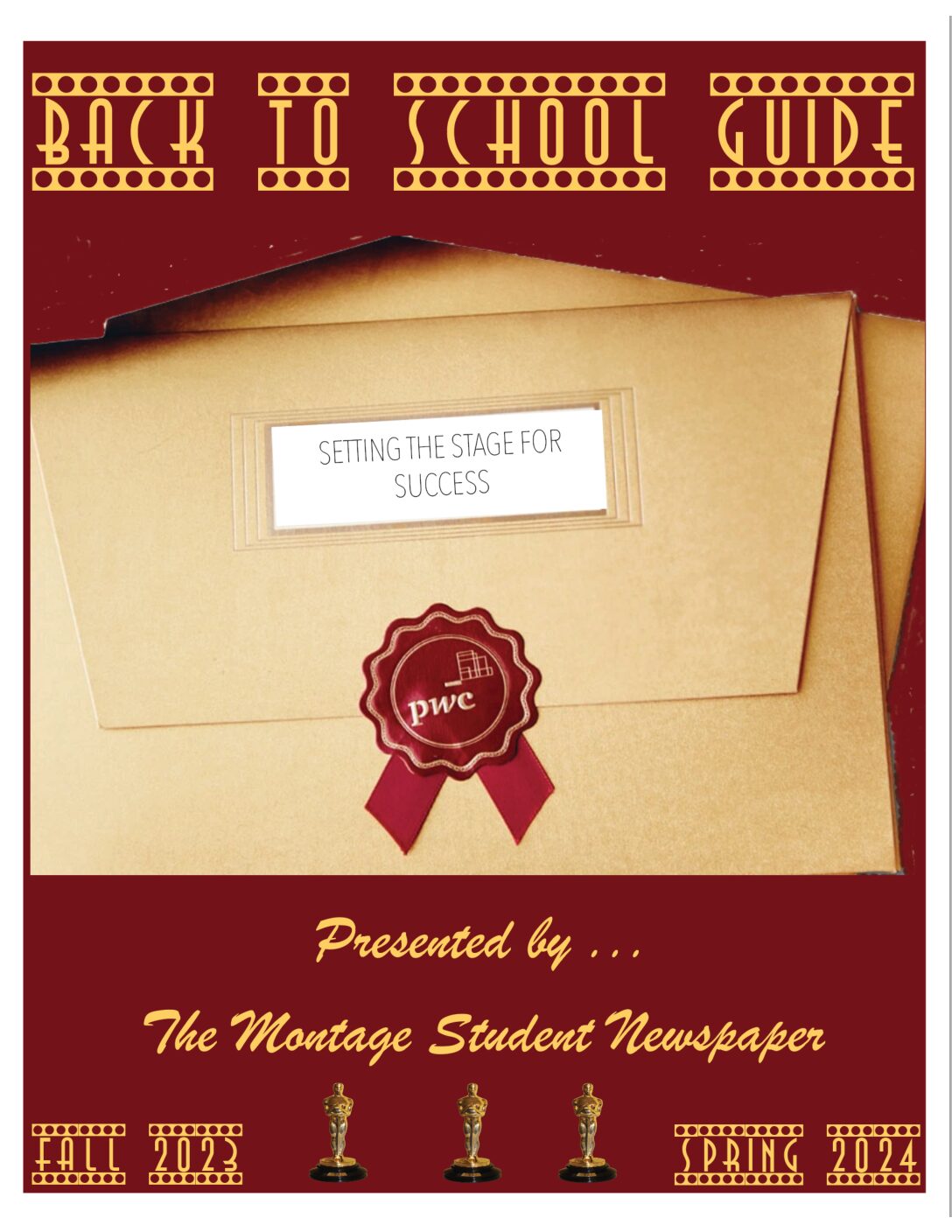Thousands of wires, countless machines and a large staff populate several floors of the Joseph P. Cosand Community College Center. What are they doing there? They comprise the hub that operates the widespread telecommunications for all STLCC campuses. A full explanation of the software, hardware and services that they oversee wouldn’t even begin to fit in just a few pages. Suffice it to say that students, faculty and staff are connected to a massive infrastructure. From installing Adobe Creative Suite 5 in graphic design classrooms, to providing automated registration kiosks, find out what what’s new in technology for the Fall 2010 semester at STLCC-Meramec.
 By: Anna Nowotny
By: Anna Nowotny
-In-Depth Editor-
When Joseph Craig Klimczak, Ph.D., was a student at University of Missouri-Columbia, he had to scroll through microfiche or microfilm in the library to find information for research papers. Today, Klimczak, STLCC vice chancellor for Technology and Educational Support Services (TESS), loves to talk about the latest technology that helps STLCC campuses run smoothly. TESS ensures that students are just a few clicks away from registering for classes, viewing their grades on Banner, or taking a test on Blackboard.
“Education is primarily an information business. Technology is how we deliver it,” Klimczak said.
Klimczak looks for ways to deliver information to an expanding student body with the best technology STLCC can afford. If the 52-page self-assessment that outlines TESS’s goals for each year is any indication, this is no easy task.
According to Klimczak, STLCC stores more records than University of Missouri-Columbia. To do this and more, TESS maintains 148 servers on the 3rd floor of the Cosand Center downtown.
In response to budget constraints, increased security challenges, and increased user traffic, TESS has made many changes to telecommunications in the seven years since Klimczak has been vice chancellor.
“Since I’ve been here we no longer print grades,” said Klimczak. “So much of what we do now is being produced electronically.”
Changes like this one aid efficiency and free up money to spend on upgrading or adding new technology like the STLCC student email (my.stlcc.edu).
“My most favorite memory is the student e-mail project,” said Klimczak. “So many people worked together, got excited, got engaged.”
Not every change comes without hurdles. Students enrolled for 2010 spring semester at STLCC-Meramec may remember when Blackboard failed one week before finals.
“We had a particularly tough spring,” Klimczak said.
Blackboard was upgraded in January. When the number of people logging on tripled during peak times to 360 people within a five-minute period, the drives and control links couldn’t handle the volume.
TESS and its STLCC-Meramec counterpart, Campus Technology and Support (CTSS), work together to manage crises such as this one. TESS got Blackboard up and running again after one hour.
“We are constantly measuring, assessing and troubleshooting,” Klimczak said.
TESS is in the process of implementing a second Blackboard in case the one being used fails.
Other changes that will directly affect students will make Banner and Blackboard more accessible.
At this time, logging into Banner and Blackboard requires two different sets of login names and passwords. In the near future, students will only need use their my.stlcc.edu to login to both.
“We’re going to get that done this year,” Klimczak said.
Klimczak not only understands the intricacies of technology, he also sees the big picture.
“The problems we are solving are bigger, more complex and more global. So, solutions have to be bigger, more complex and more global,” Klimczak said. He stresses the importance of collaboration in today’s increasingly complex world.
According to Klimczak, Microsoft’s Sharepoint management software makes collaboration possible. Members of STLCC-Meramec’s Student Governance Council use it when they log in to groups.stlcc.edu and access their group’s documents and discussions.
According to Klimczak, telecommunications systems on campus and beyond are constantly changing. As soon as one mechanism is updated, another is obsolete. For some, this may be daunting, but for Klimczak, it is one of the hallmarks of success.
“The greatest thing about my job is nothing is ever the same. If it is, you are not making any progress,” Klimczak said.








